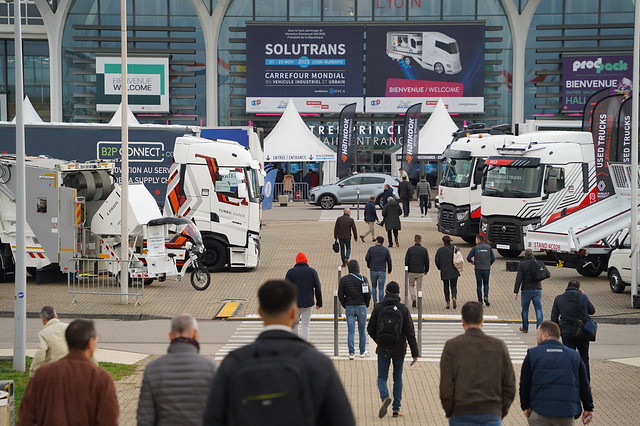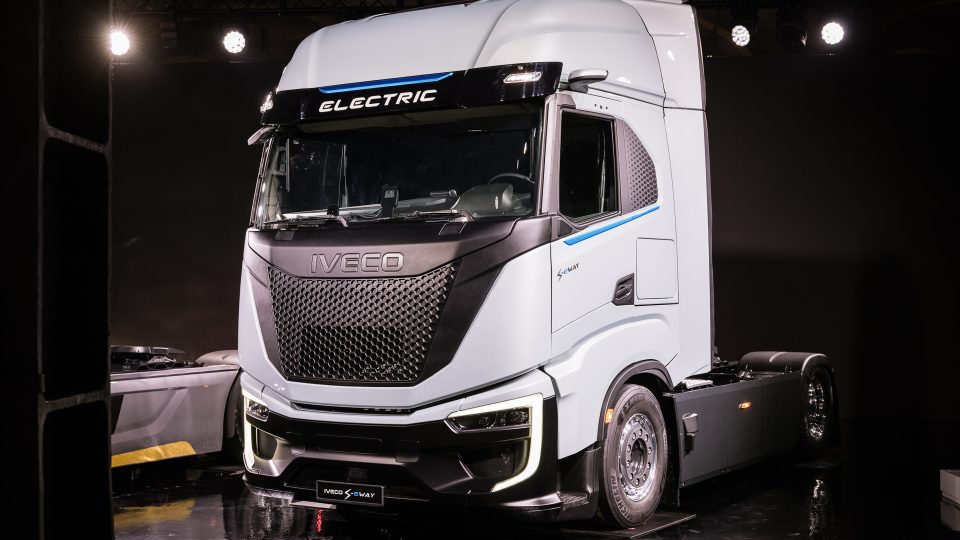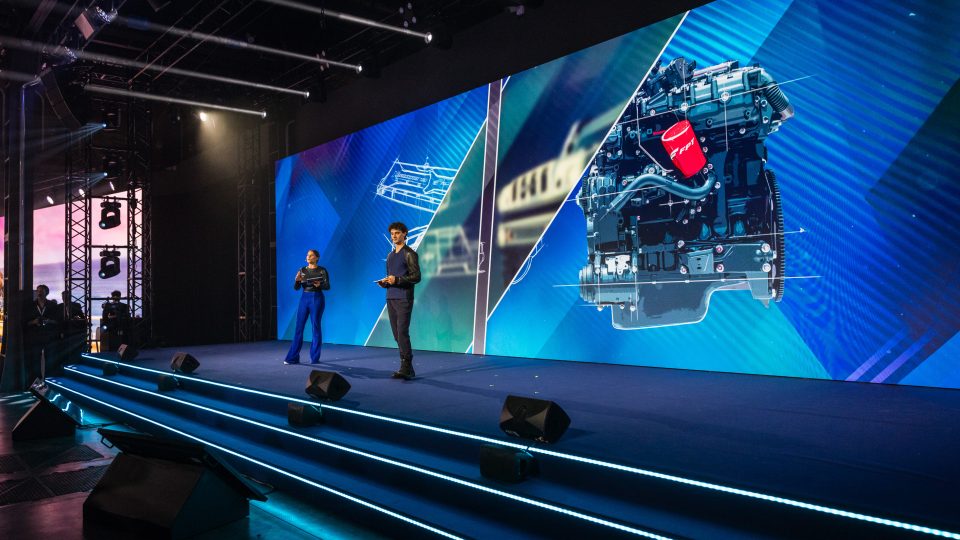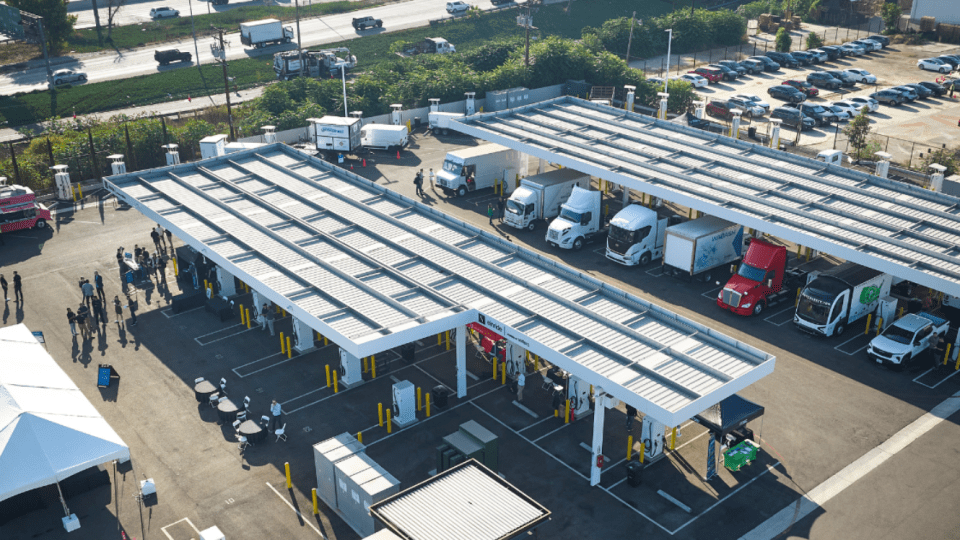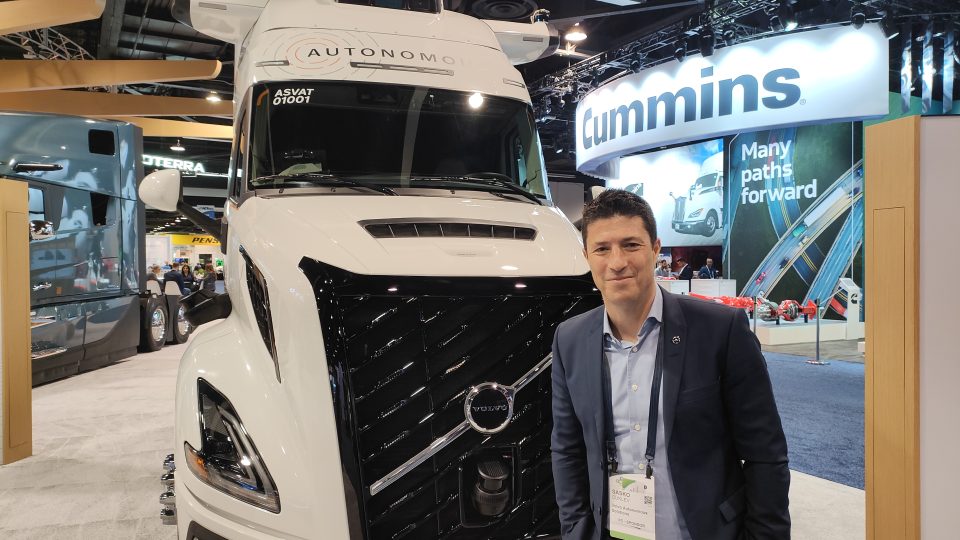Evren Akçora (Daikin Transport Refrigeration): «It’s all about energy efficiency and reliability»
Daikin is ready to approach the crowded European market of transport refrigeration solutions. Also relying on a sustainable strategy aimed at achieving zero carbon footprint by 2050. «Electrification is not about removing a diesel engine and replacing it with an electric motor. We need to improve the energy management of the whole system including the vehicle», told us Evren Akçora.
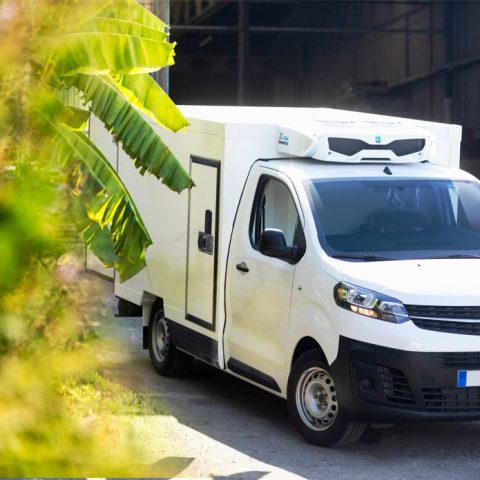
Within Daikin Europe, the Transport Refrigeration division is rapidly growing and evolving, especially after some key acquisitions, such as the one of the renown Italian specialist Zanotti. Now, by welcoming Zanotti’s know-how and integrating it with Daikin’s processes and expertise on electric products and solutions (here’s a link to a recent interview with Daikin experts at Solutrans), the global group is ready to approach the crowded European market of transport refrigeration solutions. Also relying on a sustainable strategy aimed at achieving zero carbon footprint by 2050, after reaching some intermediate emissions reduction targets. Our chat with Evren Akçora, Business Unit Leader, Daikin Transport Refrigeration, starts from this.
Daikin Transport Refrigeration within the company’s Vision 2050
Why is the Daikin Environmental Vision 2050 so important for the Group? And what is the role of the Transport Refrigeration division in such a scenario?

«Our vision for sustainability is not just about our factories and buildings, but about the entire lifecycle of our products. Our environmental vision 2050 established a clear goal to reach net-zero carbon footprint of the entire lifecycle of our products. Besides the environment, this adds further value to our customers, in order to achieve their own sustainability goals by using our products.
As for the transport refrigeration side, the automotive industry has got very similar targets when it comes to carbon neutrality by 2050. So, all of our product development currently is aimed at meeting the needs of today’s markets while overcoming the challenges for the future. To make a clear example, our vision is that all transport refrigeration in the future will be all electric-powered».
One of the intermediate targets within such a vision is a 30% reduction of CO2 emissions by 2025. As 2025 is not that far away, can we say Daikin is on the right path? In your opinion, is the target achievable?
«The first step to achieve a 30% reduction by 2025 is by establishing the correct way of measuring these. Daikin has been working on establishing the right KPIs to measure CO2 reduction and make these KPIs as visible and as critical as any other financial KPIs. Within Daikin Europe, we have an environmental research department, keeping the entire organization focused on achieving this target, and as for Transport Refrigeration, we are on track with our all-electric new products in the development pipeline».
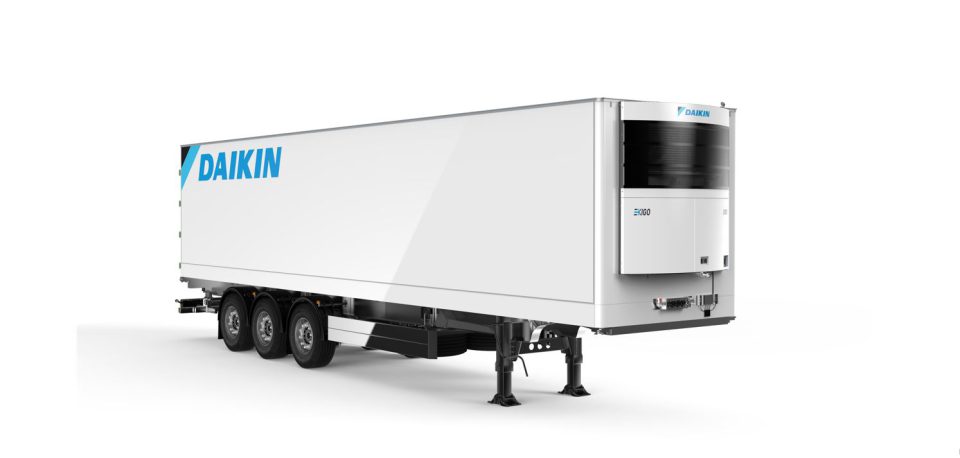
Zanotti and more. Daikin relies on Europe
We know that Daikin has got quite ambitious plans for Europe in the next 5 years as for investments and jobs to be created. Can you give us some more details about it? And how these plans are affecting the Transport Refrigeration division?
«Daikin’s business is growing rapidly in Europe. It is no coincidence we’re a company fully aligned with today’s global trends, as we’re focused indeed on energy efficiency. In all our business segments (heating, ventilation, air conditioning and refrigeration) we’re hiring engineers, sales representatives and supporting staff in order to meet the demands of our customers.
Transport refrigeration is a rather new business for Daikin, therefore getting even more attention from the executives. Our team and business are growing rapidly and our investments are increasing significantly, all of which translates into new and innovative solutions for, and opportunities in, the transport refrigeration market».
Daikin is an electric company, basically. In every segment of HVAC/R, our products aim to achieve the utmost energy efficiency through electronics hardware and software algorithms developed by Daikin
Evren Akçora, Business Unit Leader, Daikin Transport Refrigeration
What’s going to happen now, following the key acquisition of Italian brand Zanotti, as for R&D and production sites in Europe?
«As Daikin acquired Zanotti, the latter was an all-inclusive business with all the key functions. The integration of Zanotti into Daikin allowed us to establish sales channels across Europe, of course relying on the Daikin footprint. Within Zanotti, we’ve brought the Daikin Europe development center oversight into all product development. In the near future, we will physically separate product development in Pegognaga: we purchased the land close to our factory where we will be building a state-of-the-art R&D and testing facility. It will become the global center of excellence for transport refrigeration development and all our engineering team will be sitting there, reporting directly to our Europe development center.
Zanotti itself remains the global flagship factory of our transport refrigeration division, managed by the Daikin Europe operations team, following the same KPIs, the same product processes and so on. For now though, we are awaiting local authority processes before we can start the construction of the site and hope to be up and running as soon as possible».
The European market of transport refrigeration solutions is quite a crowded one. What’s the key message Daikin intends to release in order to stand out in front of the competition?
«Daikin is all about energy efficiency and reliability. We might appear to be a new player in this space, but most logistics companies would recognize us as the global market leader for container transport refrigeration. We aim to bring the best products for our customers. In this case, the reliability we promise comes from our design, development, production and the unique proposition to use Daikin’s in-house components in our products. As for energy efficiency, we are strong advocates of the variable speed technology, in order to optimize unit performance and energy consumption throughout the operating range».
Exigo: the platform is ready for the electric
At Solutrans Lyon, we’ve seen the Exigo E1500, introduced as the very first Daikin-branded product. There, your colleagues told us it’s an open platform. Can we see it as a starting point in view of some more products to be developed in the near future?
«Exigo is a trailer refrigeration platform where we intend to develop multiple products. It is designed with an all-electric architecture, however we’re powering the first unit, the E1500, by means of a diesel-powered generator to meet the current demands of the market. The next launch of this product in the same platform is going to be a full electric unit.
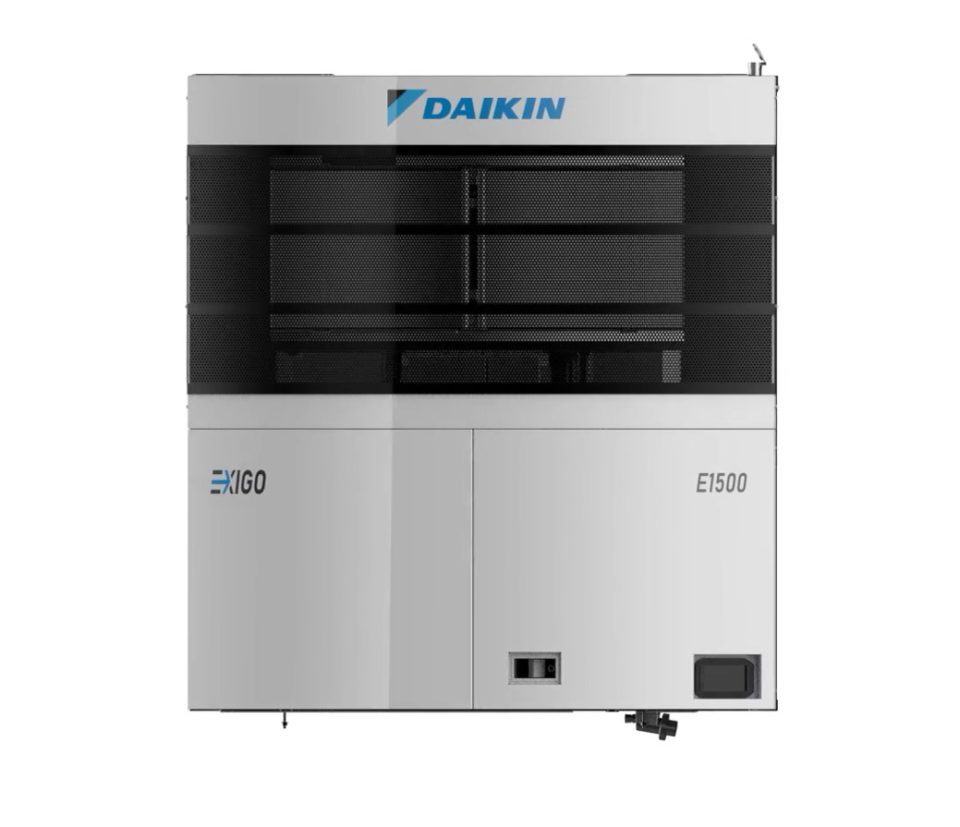
Daikin is an electric company, basically. In every segment of HVAC/R, our products aim to achieve the utmost energy efficiency through electronics hardware and software algorithms developed by Daikin. In fact, Exigo utilizes electronics designed and manufactured by Daikin, also used with hundreds of thousands of commercial refrigeration products».
Let’s talk about electric transport refrigeration systems. Which are the main issues currently when it comes to integrate an electric cooling system into a battery electric vehicle? In other words, what’s the best way to integrate a cooling system without affecting range, overall weight and, of course, performance of the vehicle?
«‘System’ is the key word. Electrification is not about removing a diesel engine and replacing it with an electric motor. We need to improve the energy management of the whole system including the vehicle. As I mentioned, energy efficiency is part of the Daikin culture. Of course, we’re working closely with vehicle manufacturers to streamline the power storage and usage of both the vehicle and the refrigeration unit. We’re designing our units with flexible power inputs, and modular battery packs so the system can be customized according to the application».
Electrification is not about removing a diesel engine and replacing it with an electric motor. We need to improve the energy management of the whole system including the vehicle
Evren Akçora, Business Unit Leader, Daikin Transport Refrigeration
Different commercial vehicles, different solutions
Which are the main differences, in terms of requirements, between heavy-duty trucks, distribution trucks and light commercial vehicles? Is Daikin working on all these market segments?
«If we split the refrigerated transport market into urban delivery and long-haul, we do expect certain habits to be different between these two sectors. Apart from the size and type of the vehicles involved, we believe customers in each segment have different requirements. As for our Zanotti products, we have modernized the whole light commercial vehicle portfolio by adding a complete electric offering in both our Zero and Invisible series. This immediately addresses our customers’ needs for efficient, reliable and zero emission refrigeration units for inner-city, last mile and pharma deliveries».
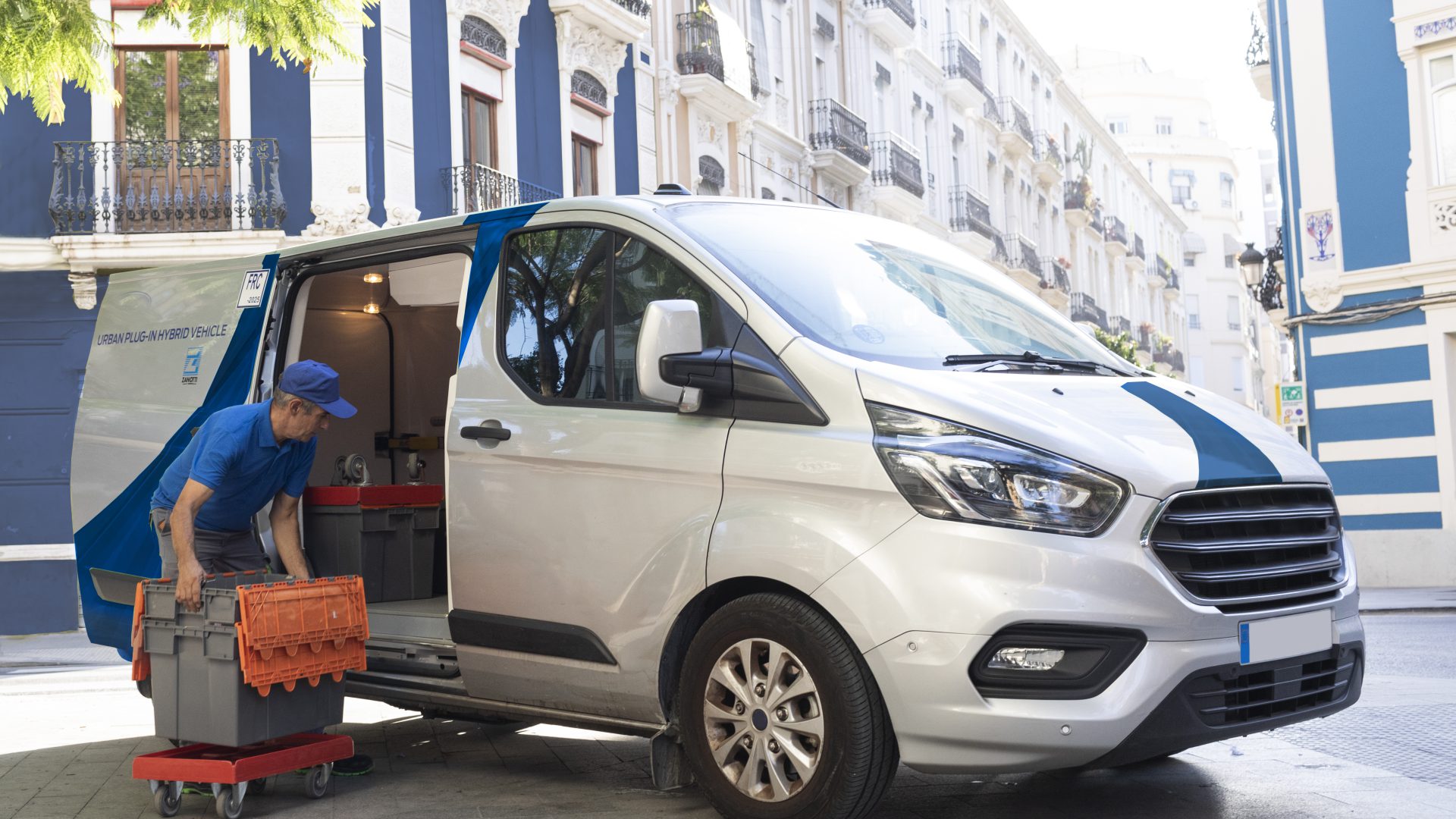
We know the need to keep the cold chain when it comes to urban distribution is increasingly crucial, as the van market is having a significant boost. How’s Daikin approaching zero-emission urban distribution? Is there a dedicated product line?
«Indeed. For the van segment, Daikin has the Zanotti Invisible Electric product range. Installed underneath the vehicle chassis and completely invisible from the outside, these products preserve the aesthetics, original height and aerodynamics of the vehicle, while reducing bodywork. As the vans get larger or we consider the light truck segment, we have the Zero Electric product range, easy to install and to service with removable side panels, with the possibility to mount the condensing unit on the roof or the front wall of the box. The Zero electric range has both single- and multi-temp solutions and the Z350e is the most powerful unit in its category».




